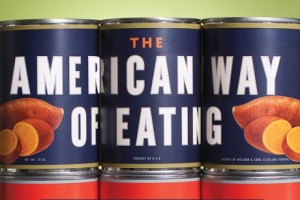 The hubbub over Chief Justice John Roberts deciding in favor of the Affordable Care Act—specifically, the way he found it constitutional on the basis of taxation rather than the power of the federal government to regulate commerce—got me thinking about our gardens and dinners. See, a shocking amount of American law that I think essential to an equitable society rests on the rather narrow Constitutional text “The Congress shall have the power to regulate commerce.” A significant aspect of the constitutionality of the Civil Rights Act of 1964, for instance, depended on the Court’s determination that the Commerce Clause gave the feds the power to regulate businesses that served mostly interstate travelers. Thus motels and restaurants across America could not discriminate against black Americans. Equality through Commerce. Crazy, right?
The hubbub over Chief Justice John Roberts deciding in favor of the Affordable Care Act—specifically, the way he found it constitutional on the basis of taxation rather than the power of the federal government to regulate commerce—got me thinking about our gardens and dinners. See, a shocking amount of American law that I think essential to an equitable society rests on the rather narrow Constitutional text “The Congress shall have the power to regulate commerce.” A significant aspect of the constitutionality of the Civil Rights Act of 1964, for instance, depended on the Court’s determination that the Commerce Clause gave the feds the power to regulate businesses that served mostly interstate travelers. Thus motels and restaurants across America could not discriminate against black Americans. Equality through Commerce. Crazy, right?
Okay, so what does this have to do with food? Well, the House is currently considering the next Agricultural Appropriations bill, which happens to contain a rider, known as “the Monsanto rider,” that has received, curiously, little to no coverage in the national press. This rider requires that the Secretary of Agriculture grant a farmer or industrial agri-giant a permit to plant genetically engineered crops (GMO), even if a federal court has ordered the planting halted for safety or environmental impact studies. You can read it here.
Monsanto, DuPont, etc., only have to ask, and every ruling by a federal court or enforcement of current consumer protection laws on the part of the White House or a federal regulatory agency is overridden and they can plant whatever crop they chose. Even state congresses become powerless: if they try to create local or state laws to protect eaters and farmers, they are in violation of federal law, a federal law that is written to override all other pertinent federal laws. Continue reading



